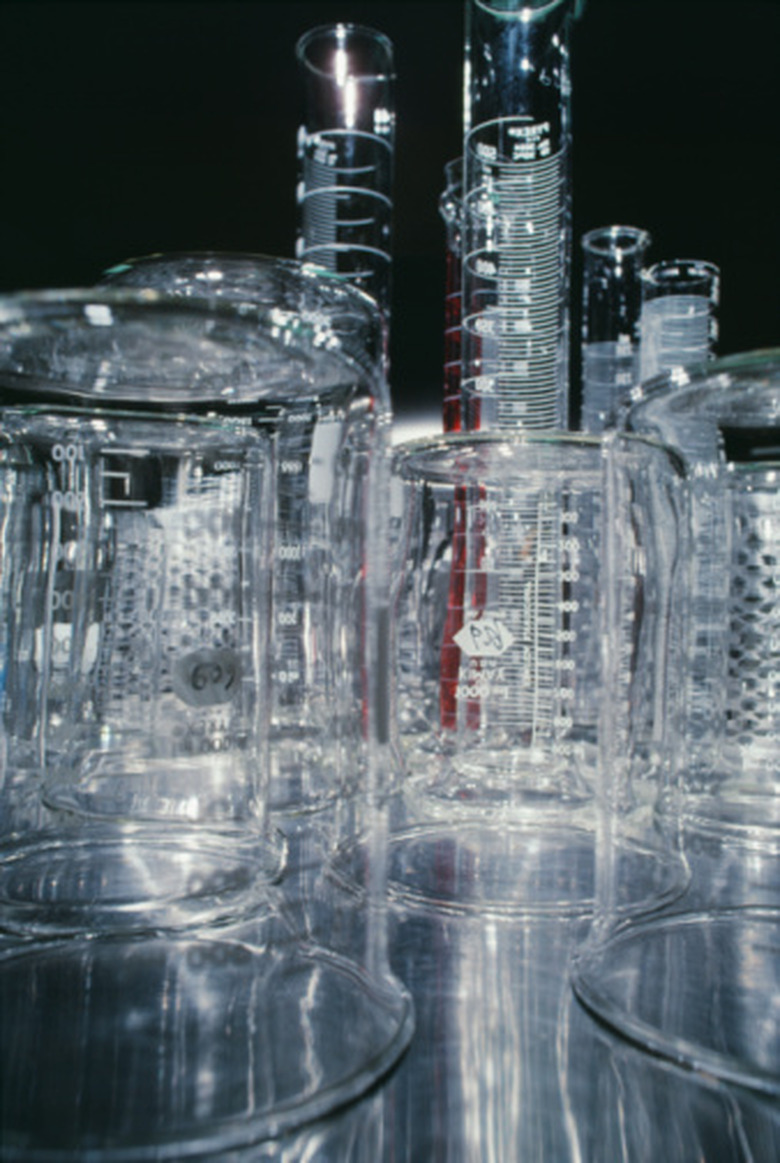How To Separate Alcohol From Water
To separate a mixture of alcohol (ethanol) and water, you can use a process known as fractional distillation. This technique relies on the fact that the compounds in the mixture have different boiling points. Since ethanol boils at a lower temperature (78.5 degrees Celsius, or 173.3 degrees Fahrenheit) than water, the alcohol vaporizes while most of the water remains a liquid. A good distillation column will produce a mixture of 95 percent alcohol and 5 percent water. This ratio represents the most pure form of ethanol possible with distillation and is widely accepted as an industry standard.
Step 1
Pour the ethanol/water mixture into the round-bottom flask.
Step 2
Assemble the fractional distillation apparatus by attaching the fractioning column to the round-bottom flask. Attach the condenser to the fractioning column and place the distillate-capturing flask under it to capture the distillate.
Step 3
Place the Bunsen burner below the round-bottom flask and heat the mixture to above the boiling point of ethanol (about 80 degrees C).
Step 4
Maintain the mixture at a constant temperature until the boiling has ceased. At this point, you have completed distillation.
Things Needed
- Bunsen burner
- Round-bottom flask
- Distillate-capturing flask
- Fractionating column
- Condenser (such as Liebig condenser)
- Thermometer
Warning
Use protective glasses during the procedure. Have a fire extinguisher nearby as a safety precaution.
References
Cite This Article
MLA
Raval, Yasho. "How To Separate Alcohol From Water" sciencing.com, https://www.sciencing.com/separate-alcohol-water-8626016/. 24 April 2017.
APA
Raval, Yasho. (2017, April 24). How To Separate Alcohol From Water. sciencing.com. Retrieved from https://www.sciencing.com/separate-alcohol-water-8626016/
Chicago
Raval, Yasho. How To Separate Alcohol From Water last modified March 24, 2022. https://www.sciencing.com/separate-alcohol-water-8626016/
